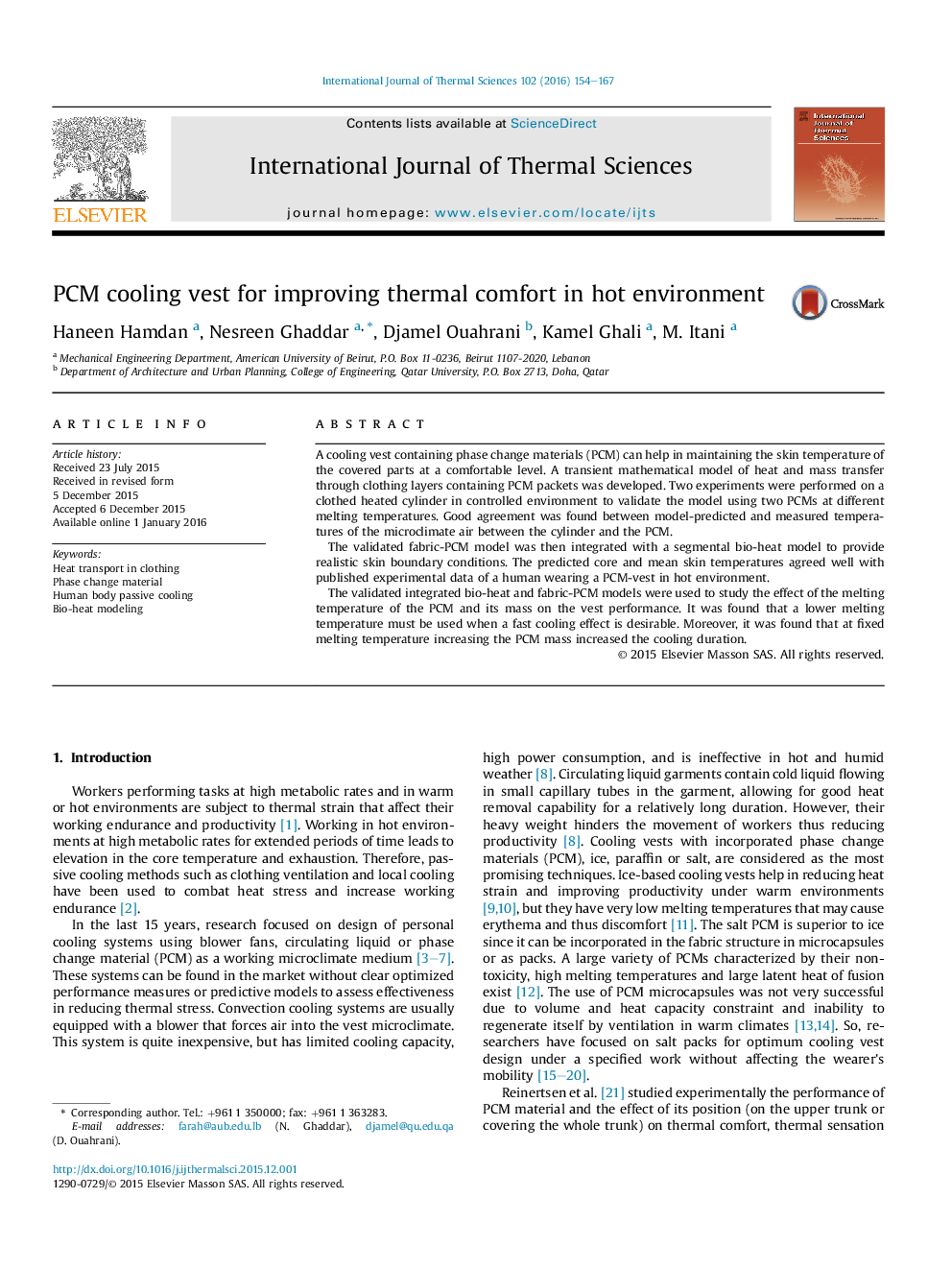| Article ID | Journal | Published Year | Pages | File Type |
|---|---|---|---|---|
| 667952 | International Journal of Thermal Sciences | 2016 | 14 Pages |
•A fabric-PCM model for heat transfer in clothing containing PCM packets is developed.•The model was validated experimentally with PCM packets of different melting points.•The fabric-PCM vest model was integrated with a segmental bio-heat model.•A lower PCM melting temperature results in faster cooling effect of the human.•Increasing the PCM mass in the vest increases the cooling duration effect.
A cooling vest containing phase change materials (PCM) can help in maintaining the skin temperature of the covered parts at a comfortable level. A transient mathematical model of heat and mass transfer through clothing layers containing PCM packets was developed. Two experiments were performed on a clothed heated cylinder in controlled environment to validate the model using two PCMs at different melting temperatures. Good agreement was found between model-predicted and measured temperatures of the microclimate air between the cylinder and the PCM.The validated fabric-PCM model was then integrated with a segmental bio-heat model to provide realistic skin boundary conditions. The predicted core and mean skin temperatures agreed well with published experimental data of a human wearing a PCM-vest in hot environment.The validated integrated bio-heat and fabric-PCM models were used to study the effect of the melting temperature of the PCM and its mass on the vest performance. It was found that a lower melting temperature must be used when a fast cooling effect is desirable. Moreover, it was found that at fixed melting temperature increasing the PCM mass increased the cooling duration.
